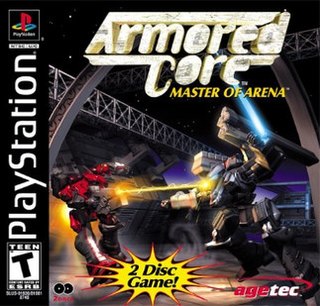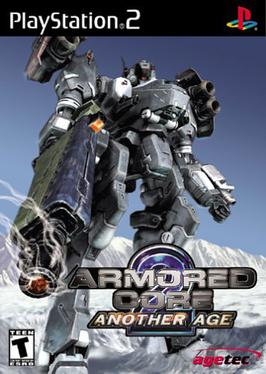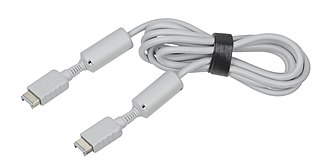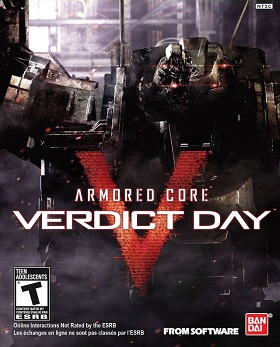FromSoftware, Inc. is a Japanese video game development and publishing company. It was founded by Naotoshi Zin in Tokyo on November 1, 1986. Initially a developer of business software, the company released their first video game, King's Field, for the PlayStation in 1994. Its success shifted FromSoftware to focus fully on games, with them producing two more King's Field games before the first release of the mecha shooter series Armored Core in 1997.

Armored Core is a 1997 third-person shooter mecha video game developed by FromSoftware and published by Sony Computer Entertainment for the PlayStation. The game is the first entry in the Armored Core series. A digital port was released in 2007 in Japan and 2015 in North America on the PlayStation Network as a part of the PSone Classics line of games.

Armored Core: Project Phantasma is a 1997 third-person shooter mecha video game developed by FromSoftware for the PlayStation. Project Phantasma is the second entry in the Armored Core series and a prequel to the original Armored Core. The game was not released in Europe.

Armored Core: Master of Arena is a 1999 third-person shooter mecha video game developed by FromSoftware for the PlayStation. Master of Arena is the third entry in the Armored Core series and a direct sequel to Armored Core: Project Phantasma. It is the final game in the original Armored Core trilogy. The game was not released in Europe. An indirect sequel, Armored Core 2, was released on August 3, 2000, for the PlayStation 2.

Armored Core 2 is a 2000 third-person shooter mecha video game developed by FromSoftware for the PlayStation 2. It is the fourth entry in the Armored Core series and an indirect sequel to Armored Core: Master of Arena. In North America, Armored Core 2 was a launch title for the PlayStation 2. A direct sequel, Armored Core 2: Another Age, was released in 2001 for the PlayStation 2.

Armored Core 2: Another Age is a 2001 third-person shooter mecha video game developed by FromSoftware for the PlayStation 2. It is the fifth entry in the Armored Core series and a direct sequel to Armored Core 2. A reboot of the series, Armored Core 3, was released in 2002 for the PlayStation 2.

Armored Core 3 is a 2002 third-person shooter mecha video game developed by FromSoftware for the PlayStation 2. It is the sixth entry in the Armored Core series. Armored Core 3 acts as a reboot for the franchise and begins a storyline that would continue through Armored Core: Last Raven. In 2009, Armored Core 3 was ported to the PlayStation Portable.

Silent Line: Armored Core, known in Japan as Armored Core 3: Silent Line, is a 2003 third-person shooter mecha video game developed by FromSoftware for the PlayStation 2. It is the seventh entry in the Armored Core series and a direct sequel to 2002's Armored Core 3. In 2009, Silent Line: Armored Core was ported to the PlayStation Portable.

Armored Core: Nexus is a 2004 third-person shooter mecha video game developed by FromSoftware for the PlayStation 2. It is the eighth entry in the Armored Core series and a sequel to 2003's Silent Line: Armored Core. Unlike Silent Line, Nexus is not an expansion but rather a full-fledged sequel.

Armored Core: Nine Breaker is a 2004 third-person shooter mecha video game developed by FromSoftware for the PlayStation 2. It is the ninth entry in the Armored Core series and a spin-off to Armored Core: Nexus.

Armored Core: Last Raven is a 2005 mecha-based vehicular combat game developed by FromSoftware. It is part of the Armored Core series and is a direct sequel to Armored Core: Nexus (2004). The game was originally released for the PlayStation 2 and was ported to the PlayStation Portable in 2010. Gameplay remains largely unchanged from the game's predecessors and is centered around piloting a large mech in combat missions for various clients. The game is also notable for being the debut project of future FromSoftware president Hidetaka Miyazaki.

Armored Core 4 is a 2006 mecha-based vehicular combat game developed by FromSoftware for the PlayStation 3 and Xbox 360. The fourth main entry of the Armored Core series, the game serves as a reboot for the franchise and is set in the future where a war has made the nations of Earth devastated and their respective governments have been replaced by corporations. Conflicts soon begin to break out between the corporations, which use massive combat robots, Armored Cores, to fight each other. The player is a Lynx, a name given to pilots of highly advanced NEXT Armored Cores.
Kota Hoshino is a Japanese composer and sound designer. As part of FromSoftware's sound team, Hoshino is best known for composing multiple games in the Armored Core series and as the bassist and vocalist of FreQuency.

MechAssault 2: Lone Wolf is a 2004 video game developed by Day 1 Studios and FASA Studio and published by Microsoft Game Studios exclusively for the Xbox console, and set in the BattleTech universe. Development of MechAssault 2 was announced shortly following the release of MechAssault, with the developers focusing on the expansion of online and networking features to capitalise upon the success of the original game as a pilot title for the Xbox Live online service, and creating a more open-ended gameplay style in which players are able to exit their mech and occupy multiple vehicles.

Metal Wolf Chaos is a third-person shooter video game developed by FromSoftware. It originally released in 2004 in Japan for the Xbox. The player takes on the role of fictional United States President Michael Wilson piloting a mech to battle the rebelling military, led by fictional Vice President Richard Hawk. Wilson's mech can be equipped with up to eight weapons selected from a set of over a hundred. In each mission, the player battles through destructible environments, destroying all enemies they come across.

The PlayStation Link Cable (SCPH-1040) is a peripheral cable for the first generation PlayStation console. Utilizing the serial I/O port found on the back of most PlayStation models, it allows for two consoles to be connected in order to play compatible multiplayer games on separate consoles and displays. The cable is a 8-pin inline serial cable and was a fully supported Sony accessory for the market life of the console. It is not compatible with the redesigned PS one or newer PlayStations.

Armored Core V is a mecha-based video game developed by FromSoftware and published by Namco Bandai Games for PlayStation 3 and Xbox 360. It is the 14th main installment in the Armored Core series and a return to the more traditional style of gameplay found in the original series of games.

Armored Core: Verdict Day is a mech action game developed by FromSoftware and was published worldwide in September 2013 by Namco Bandai Games for PlayStation 3 and Xbox 360. It is the 15th installment in the Armored Core series and a direct sequel to Armored Core V.

Iron Soldier 3 is a 2000 mech simulation video game developed by Eclipse Software Design for the PlayStation and Nuon. It was published by Vatical Entertainment and VM Labs in North America, and by Telegames in Europe. It is the third and final entry in the Iron Soldier series. Set in a future where industrialization has covered much of the Earth, the player takes part in an elite defense force piloting a robot to protect the United Republic against terrorist activities by PENTA. The player is tasked with various objectives while fighting enemies in multiple missions.

Armored Core VI: Fires of Rubicon is a mecha-based vehicular combat game developed by FromSoftware and published by Bandai Namco Entertainment, and part of the Armored Core series. It was released for PlayStation 4, PlayStation 5, Windows, Xbox One, and Xbox Series X/S on August 25, 2023. A reboot of the series, the game is set in the distant future on the remote planet Rubicon 3. There, a war erupts between corporations, the government and the remnants of the planet's colonists for control of Coral, a rare and incredibly powerful energy source unique to Rubicon once thought to have been destroyed in a cataclysm. The main character, C4-621, is a cyborg mercenary pilot who, after meeting a Rubiconian named Ayre, influences through their actions what will become of the Coral and Rubicon itself.

















